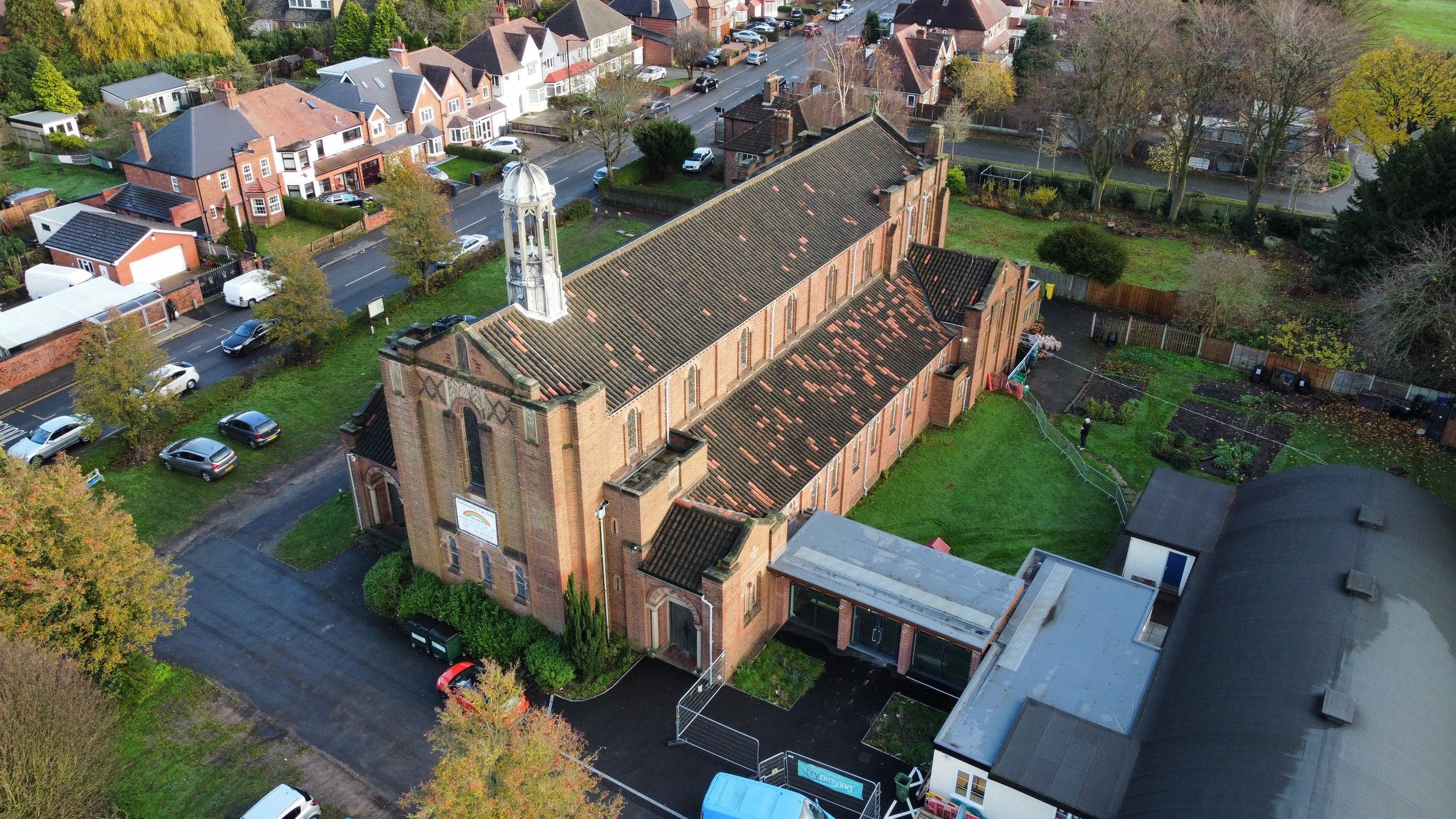The Church of England’s has an ambitious programme that aims to equip, resource and support all parts of the Church to reduce carbon emissions from the energy used in its buildings, schools and through work-related transport by 2030. They have published a case study on the work, being led by Burrell Foley Fischer, at St Germain’s Church in Edgbaston, Birmingham to reduce its carbon emissions.
The phased delivery of a long-term masterplan for the remodelling of St Germain’s is based upon a workable strategy to deliver a zero-carbon building as part of its mission within a multi-cultural society deeply impacted by Climate Change. The church (a unique Grade II* Listed structure in the neo-byzantine style dating from the early C20th) serves is home to a wider variety of community groups active across central Birmingham. The masterplan includes adaptations to the main worship area, creating more flexibility by resolving major storage challenges around running a vibrant church and an essential food bank within the same, historically sensitive space.
“A warm welcome greets people visiting St Germain’s Church in Edgbaston, Birmingham. There’s a community café, a garden project, a weekly craft session and a wellbeing hub, as well as Sunday and midweek services. The church is focused on engaging with as many people in its parish as possible, including relieving poverty in the area, work which began during the pandemic through the distribution of food.
But here’s the problem. The church suffered the catastrophic failure of both its gas and electricity systems. It was cold, so cold that during Covid it was used as a fridge to store food for the community. That’s great for the food, but less ideal if you want to offer a warm space as well as a warm welcome.
And that’s how St Germain’s became one of the first churches in the UK to receive a Stage 2 Demonstrator Church grant from the Church of England’s national Net Zero Programme. This includes a grant of £50,000 from the Net Zero Demonstrator Churches scheme, with additional co-funding of £23,600 from the Benefact Trust.
The funding will go towards the costs of installing an air source heat pump that will keep the church at an ambient temperature, as well as glazing the side chapel, to create a zoned space for around 25 people to meet or for worship, that can be heated separately without needing to heat the whole church. It is hoped the changes will reduce the church’s annual carbon emissions from 4.1 tonnes to 2.52 tonnes.
Vicar, the Rev Dr Sarah Hayes, describes just how cold the church has been. “In the winter, you just couldn’t be in it,” she said. “People wrap up to get communion books from the church to have communion in the hall.”
Faced with the problem, the church’s eco church team advised on future-proofing the building and not returning to gas. The air source heat pump will use the original 1917 floor trenches, adapting them to distribute hot air under the church’s floors. This use of existing trenches has significantly reduced the project costs, as well as reducing the embodied carbon* of installing a new floor, showing that sometimes, existing heat distribution systems coupled with the latest net zero technologies are the best solution.
“It’s going to be transformative,” said Sarah. “Glazing the side chapel gives us a creative space to use. With the church heated permanently we can run workshops and hire the space out which will help fund the church’s work and should make us sustainable for the future. We hold a weekly midweek service, which has had to move to the church hall, but in the future, we’ll be able to do that in the side chapel. People will be more willing to come if it’s warm! And our elderly people will be able to come throughout the year, in a way that they can’t now.”
It is hoped the new system will reduce running costs. Heating the church for the first six months of last year, including a back office, cost £6,500. Under the new scheme it is set to cost approximately £1,100 a year to keep the building at an ambient temperature, a huge saving.”
St Germain’s is featured in a new video that highlights the impact of the Church of England’s Net Zero Programme so far.
“St Germain’s is one of 114 church’s in the country that will be supported through the church’s demonstrator project to carry out works to reduce their carbon emissions. They will then share their learnings with others in their local area as well as nationally. Already the demonstrator project is having an impact.”
Ben Smith, Net Zero Carbon Manager, Diocese of Birmingham
The full case study can be read on the Church of England’s website here:

